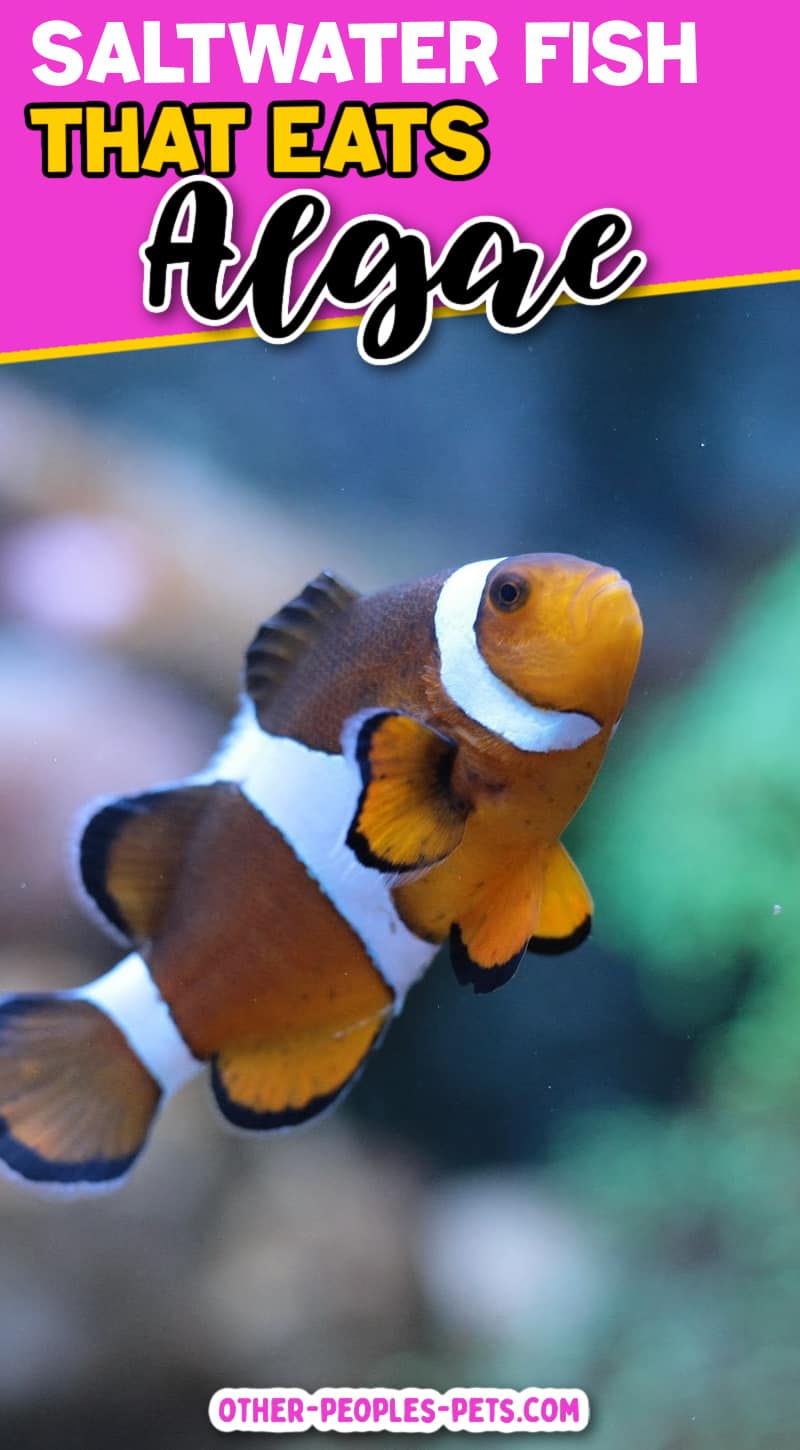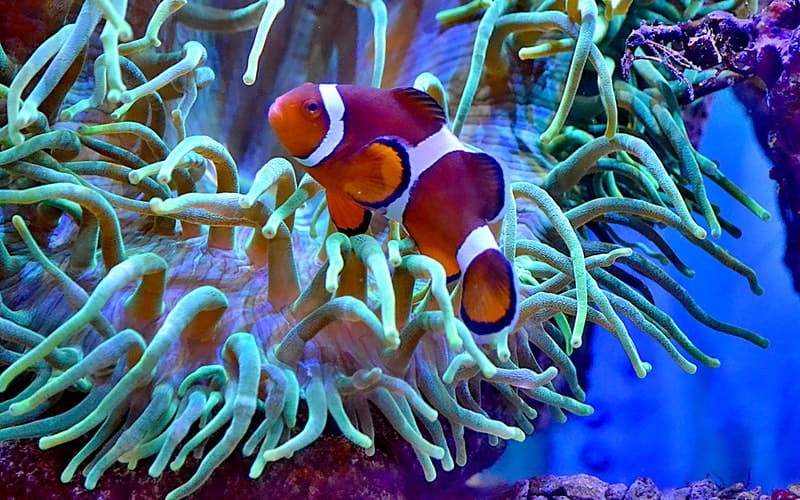Last Updated on April 12, 2023 by ellen
Do you need a saltwater fish that eats algae for your fish tank? Check out the best fish for algae control in your marine tank.
Posts may be sponsored. This post contains affiliate links, which means I will make a commission at no extra cost to you should you click through and make a purchase. As an Amazon Associate I earn from qualifying purchases.
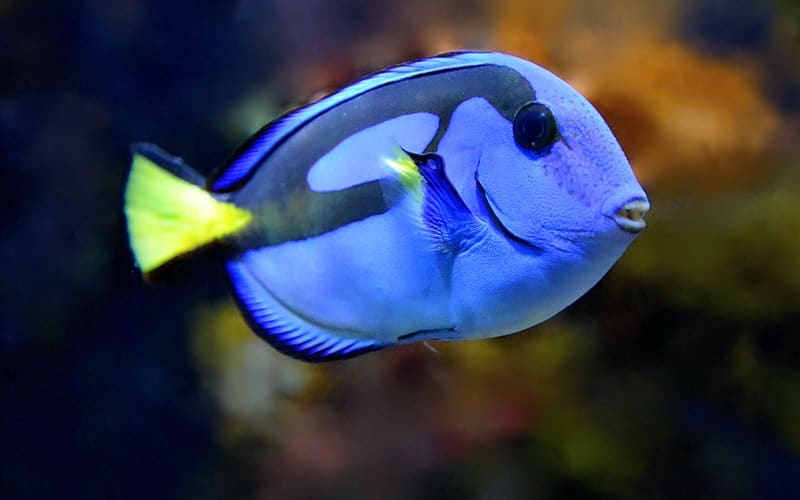
Table of Contents
Saltwater Fish that Eats Algae
Saltwater aquariums are fascinating habitats to watch. But, if you have a saltwater tank, you may have noticed algae growth is one of the challenges you need to deal with.
There are a number of different ways you can deal with unwanted algae growth in your saltwater aquarium. And, adding a few algae eaters is one of the simplest.
You may want to consider adding an algae remover to restore balance and then add a few different fish.
What eats algae in the ocean?
There are a number of fish in the ocean that eat algae. But they won’t all be suitable for salt water tank algae. Deep sea fish don’t all adapt well to an aquarium. In the deep sea, you will find these fish along the ocean floor.
But, you can add some types of catfish and crabs. You will need to be careful that they are suitable with the fish you have in your tank.
How does a tank get algae?
Algae need two things to grow: food and light. In an aquarium, algae has plenty of access to both.
You might be wondering if adding fish that eat algae is a good idea, won’t they just keep eating until there’s nothing left?
The good news is that most saltwater fish that eat algae are also grazers. This means that they will nibble on algae throughout the day but won’t devour an entire patch in one sitting.
There are a number of different types of algae you may find.
- Bubble algae
- Brown algae
- Red slime algae
- Brown diatom algae
- Coraline algae
- Blue green algae
- Green algae
- Filamentous hair algae
- Marine algae
Tips to keep algae out of a saltwater aquarium
In addition to adding fish that control algae, there are a number of things you can do to keep algae from taking over your tank.
Some of the best tips for keeping algae out of your aquarium include:
- Make sure your aquarium is properly cycled before adding fish. Ammonia and nitrites need to be at zero and nitrates should be less than 20 ppm.
- Keep your aquarium clean. Vacuum the gravel and wipe down the glass.
- Feed your fish regularly. Overfeeding can lead to algae growth.
- Remove excess food from the tank after feeding.
- Prune dead or dying plants and remove them from the tank.
- Limit the amount of light your aquarium receives.
- Use a phosphate remover in your aquarium.
What is the best peaceful fish to get rid of nuisance algae?
There are a number of different fish that will eat nuisance algae in your reef tanks, but not all are created equal. When choosing an algae eater for your saltwater reef tank, it’s important to consider the size of your tank, the type of algae you have, and the other fish in your tank.
What saltwater fish cleans the tank?
If you have a reef tank, you may be wondering if there are any fish that can help control algae outbreaks. The good news is that there are a number of fish that control algae and help keep your tank clean.
You may want to consider adding an algae remover to restore balance and then add a few different fish.
Some of the best saltwater algae eaters for cleaning your aquarium glass include:
- Tang
- Pufferfish
- Goby
- Clownfish
- Cardinalfish
- Damselfish
- Blennies
- Hermit crabs
Adding one or more of these fish to your saltwater aquarium can help you keep algae under control and your saltwater tanks clean.
What eats algae off the glass in a saltwater tank?
If you have algae growth on the glass of your saltwater aquarium, you may be wondering what will help. The good news is that there are a number of different algae eating fish that will eat algae off of the glass of your reef aquarium.
Some of the best fish for eating algae off of the glass include:
- Tang
- Pufferfish
- Goby
- Clownfish
- Cardinalfish
- Damselfish
- Blennies
Adding one or more of these saltwater algae eaters to your saltwater reef tanks can help you keep the glass clean and free of algae.
What eats hair algae?
Hair algae is a type of filamentous algae that can be difficult to control. If you have hair algae in your saltwater aquarium, you may be wondering what eats hair algae.
The good news is that there are a number of different fish that will eat hair algae. Some of the best fish for eating hair algae include:
- Tang
- Pufferfish
- Goby
- Clownfish
- Cardinalfish
- Damselfish
- Blennies
Adding one or more of these saltwater algae eaters to your aquarium can help you control hair algae growth.
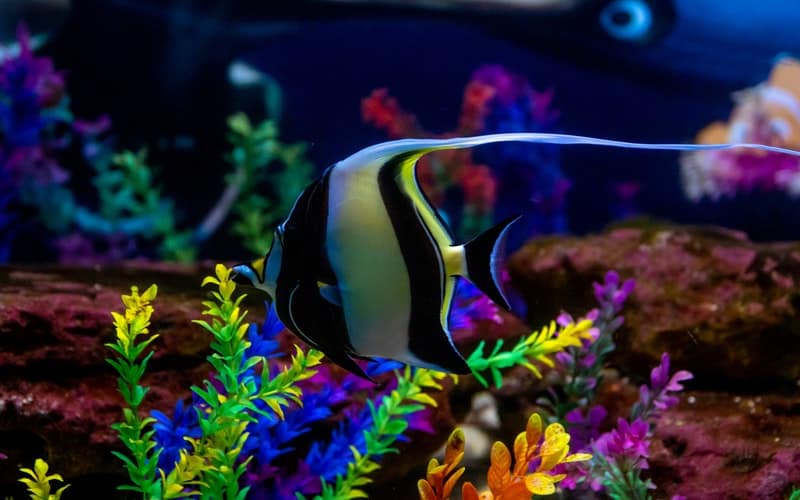
What eats bubble algae?
Bubble algae is a type of marine algae that can be difficult to control. If you have bubble algae in your saltwater aquarium, you may be wondering what eats bubble algae.
The good news is that there are a number of different fish that will eat bubble algae. Some of the best fish for eating bubble algae include blennies, tangs, angelfish, and surgeonfish.
You may want to consider adding an algae remover to restore balance and then add a few different fish.
Best crab to eat algae
If you are looking for a crab that helps with nuisance algae, the good news is that there are a number of different crabs that will help control algae. Some of the best crab algae eaters for saltwater tanks include:
- Red claw crab
- Emerald crab
- Blue leg hermit crab
- Scarlet reef hermit crab
- Halloween hermit crab
- Zebra hermit crabs
- Electric blue hermit crab
Adding one or more of these crabs to your saltwater aquarium can help you keep algae under control. Plus, hermit crabs are fun to watch.
Eats red slime algae.
Diadema Sea Urchin (Diadema setosum)
The diadema targets green hair algae, coralline algae, or filament algae and consumes large quantities and cleans glass and substrate surfaces. Many urchin species are very colorful and will accent the reef in your marine tank.
They eat coraline algae.
Bristletooth Tang (Ctenochaetus tominiensis)
They can sometimes be semi-aggressive towards others – albeit with large tanks and ample hiding spots to calm this aggression in some cases. This fish is also known as the Bristletooth Tomini Surgeon Fish.
They are aggressive with other tangs but peaceful toward other fish. They are a great choice for algae eaters.
Consider the yellow tang, chevron tang, or powder brown tang which are great algae eaters. Tangs also eat hair algae including green hair algae.
Pincushion Urchin (Lytechinus variegatus)
The pincushion urchin is another great choice for an algae eater in an aquarium. It is a reef-safe species that does not bother corals or other invertebrates. The pincushion urchin is dark green or brown with long, sharp spines.
This little urchin does an excellent job of eating algae off of rocks and glass. It is also known to help keep sandy substrates clean.
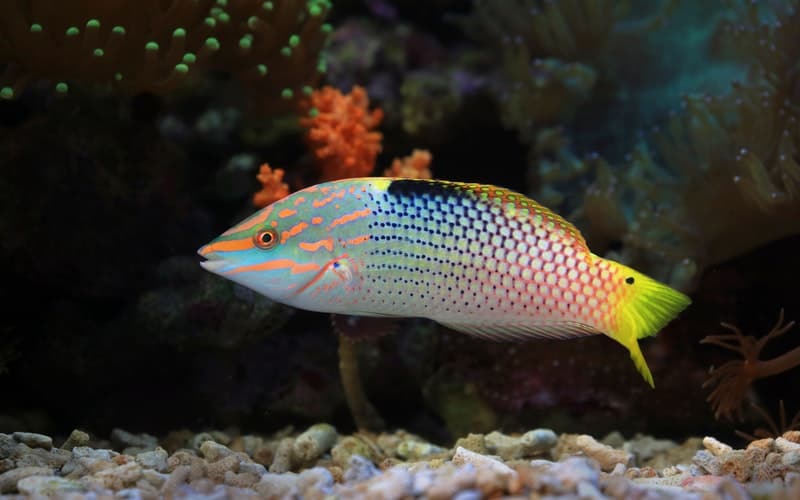
Quoyi Parrotfish (Scarus quoyi)
The Quoyi parrotfish is a beautiful fish that is blue, green, and yellow. It is a peaceful species that does well in reef aquariums. The Quoyi parrotfish is an excellent algae eater.
This fish feeds mostly on macroalgae. But, it will also consume other types of algae, detritus, and small invertebrates. The Quoyi parrotfish is a great addition to any saltwater aquarium that needs help with algae control.
Lemon Peel Angelfish (Centropyge flavissima)
Minimum tank size: 70 gallons The lemon peel angelfish has an impressive yellow hue and dark blue lines in its eyes and fins. This species is indigenous in the western part of the Pacific and is 5.5 inches long.
It eats a wide range of microalgae and filamentous algae from living rock and requires more algae to survive than the other angelfish. The lemon omnivore requires spiruline as part of the diet. Please be cautious about the use of this fish in a reef aquarium. It can nibble on large coral-like polyps and mantles.
Peppermint Shrimp (Lysmata wurdemanni)
Minimum tank size is 10.25 gallons. Peppermint shrimp is an opaque, red-striped shrimp. The Caribbean native is lively and playful growing from a young age of 2 inches and may be kept in a warmer water aquarium for up to 2 years.
An omnivorous scavenger these shrimp eat virtually everything including leftover food, debris, or algae. This requires an iodine supplement in the waters for molting.
These species do not become fully reef safe because they can snivel in softer coral if they are able. However peaceful with some fish or its own kinds, it may be aggressive with other saltwater shrimp.
Mexican Turbo Snail (Turbo fluctuosa)
The Mexican turbo snail is an herbivorous herbivore that is ideal for cold water aquariums. Their spiral shell is available in several colors in both white and dark brown spots.
Mexican Turbo snails are a good glass, sand, or surface cleaner that can be up to 3 inches wide. A Mexican Turbo Snail will eat mainly algae from saltwater, such as filamentous algae, film algae, or slime algae.
- Keeping pet snails
- Best Betta fish food
- How to care for Betta fish on vacation
- Best fish for children
- Pet snail care
- How do snails eat?
- Best pets to keep in a tank

Ellen runs a small pet sitting business in southern Vermont. She has experience with a variety of small animals, dogs and cats. She has also cared for ducks, chickens and rabbits. Combined, she has over 20 years of experience in pet care and pet sitting.
